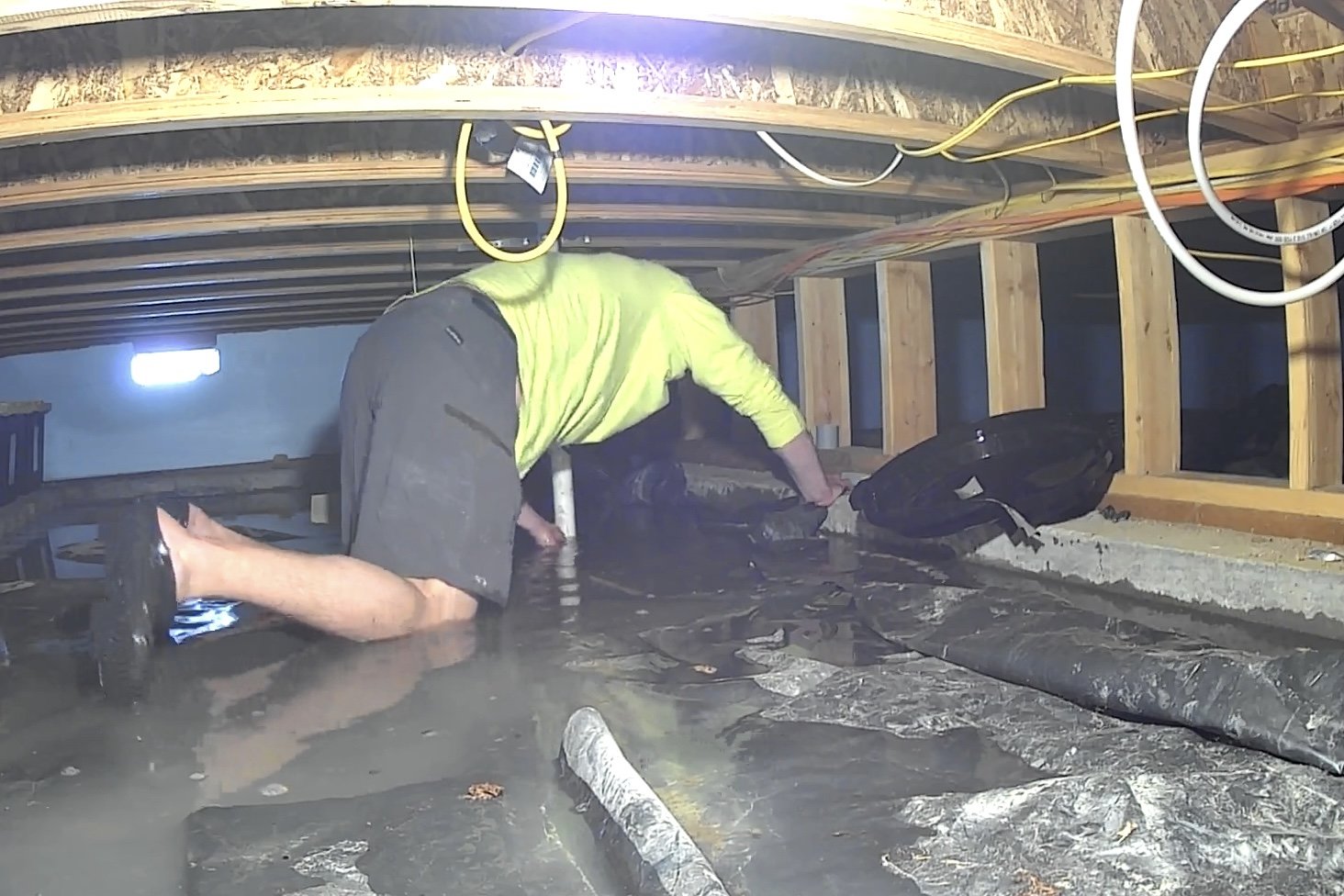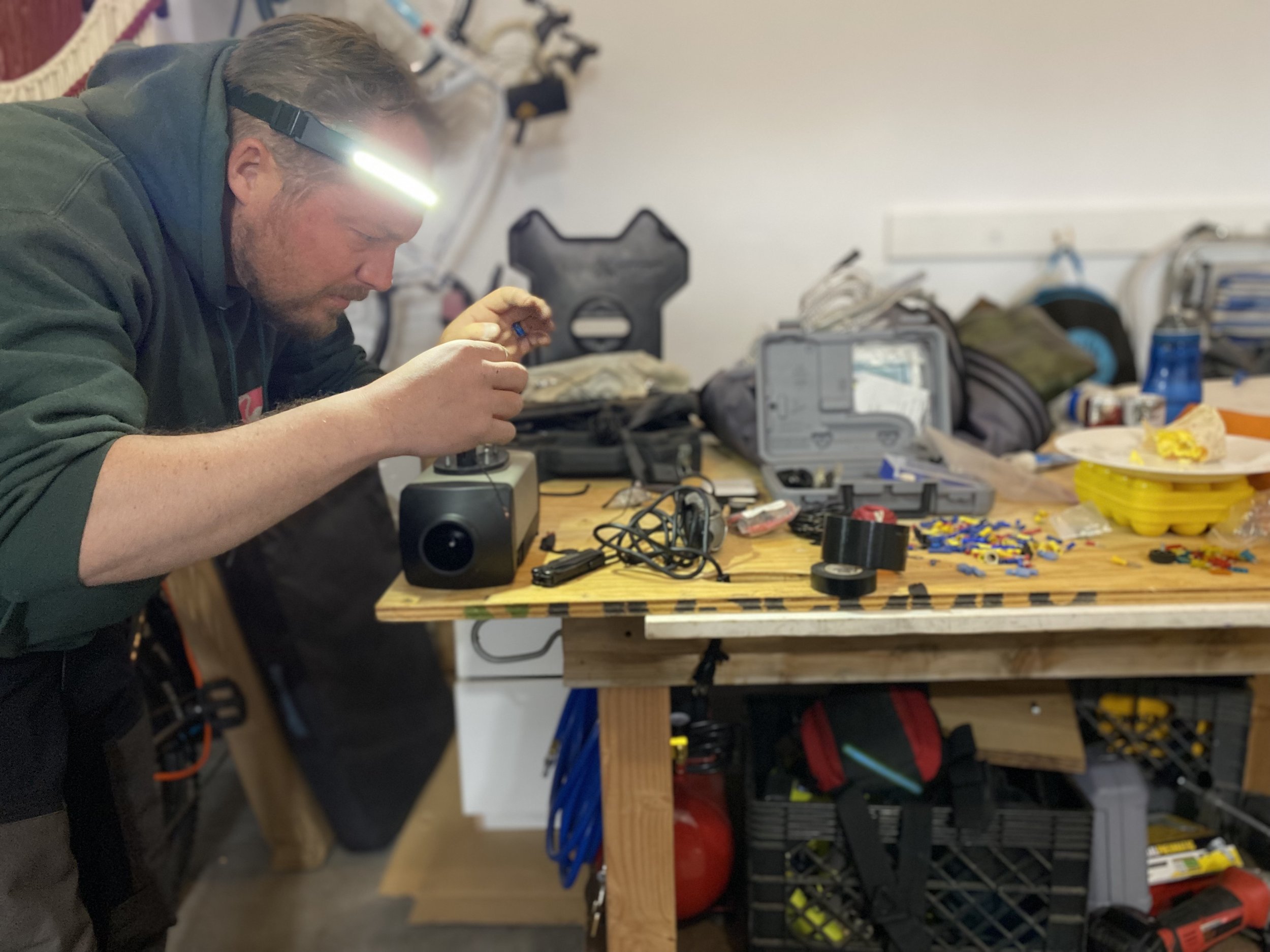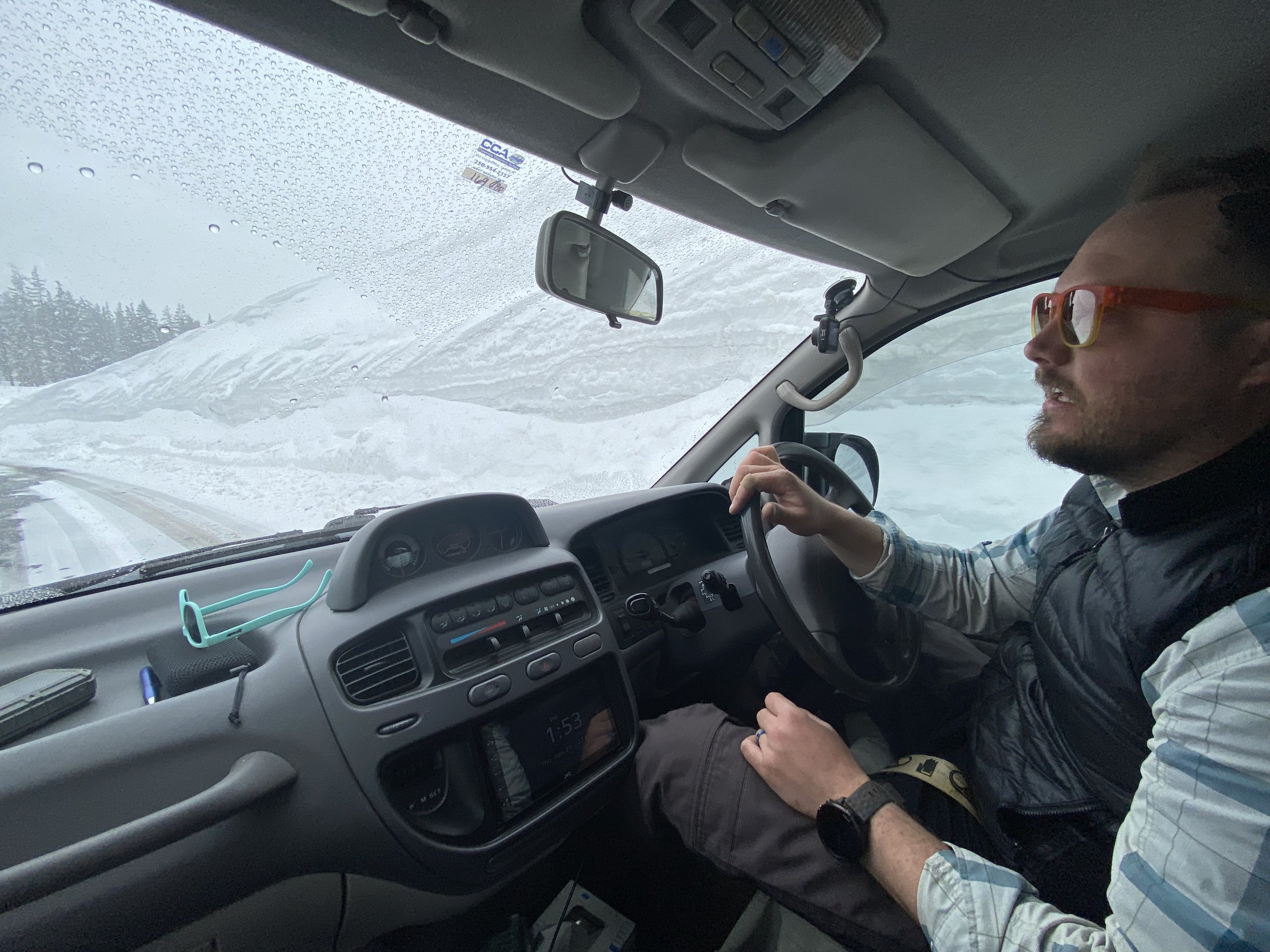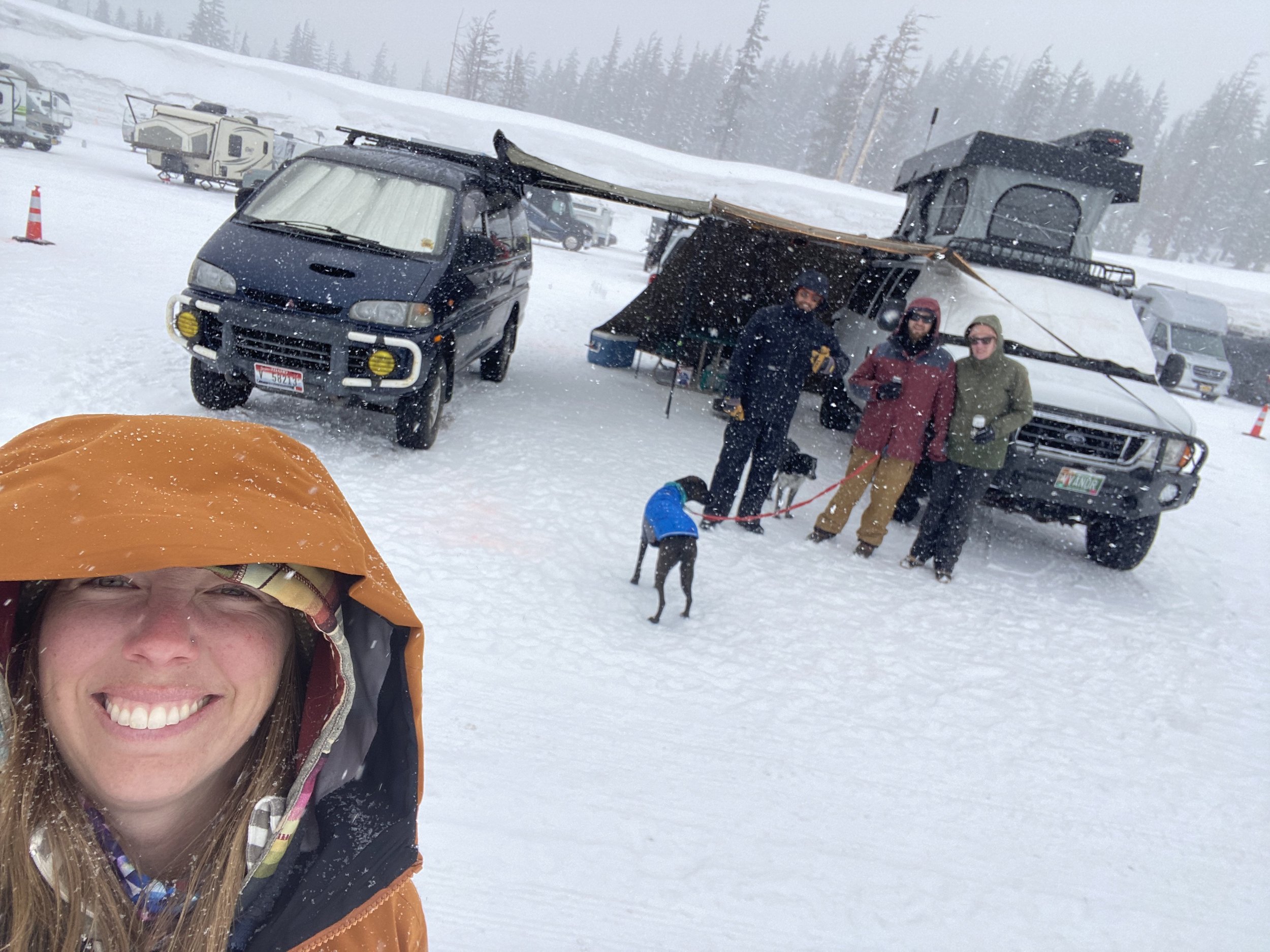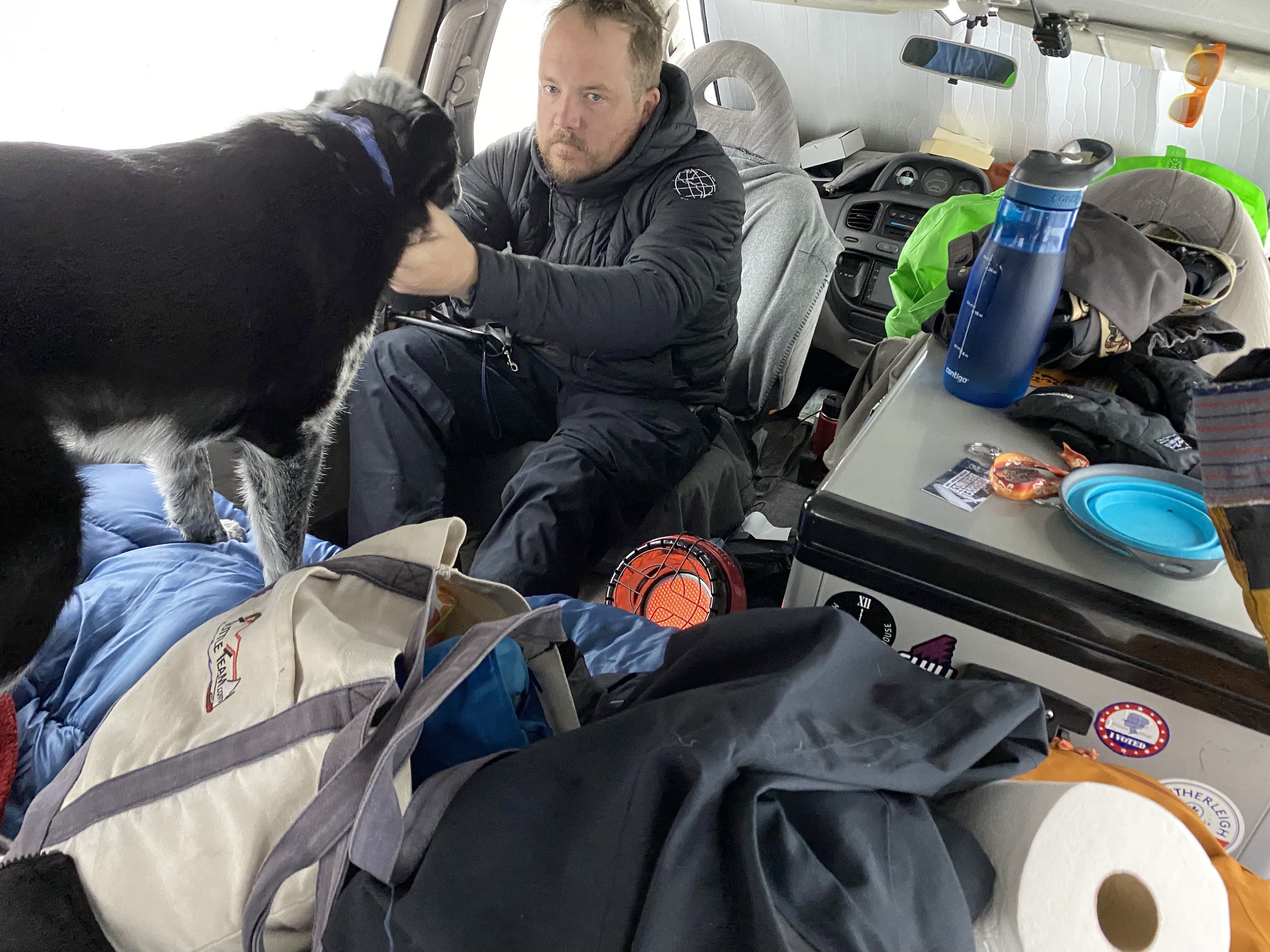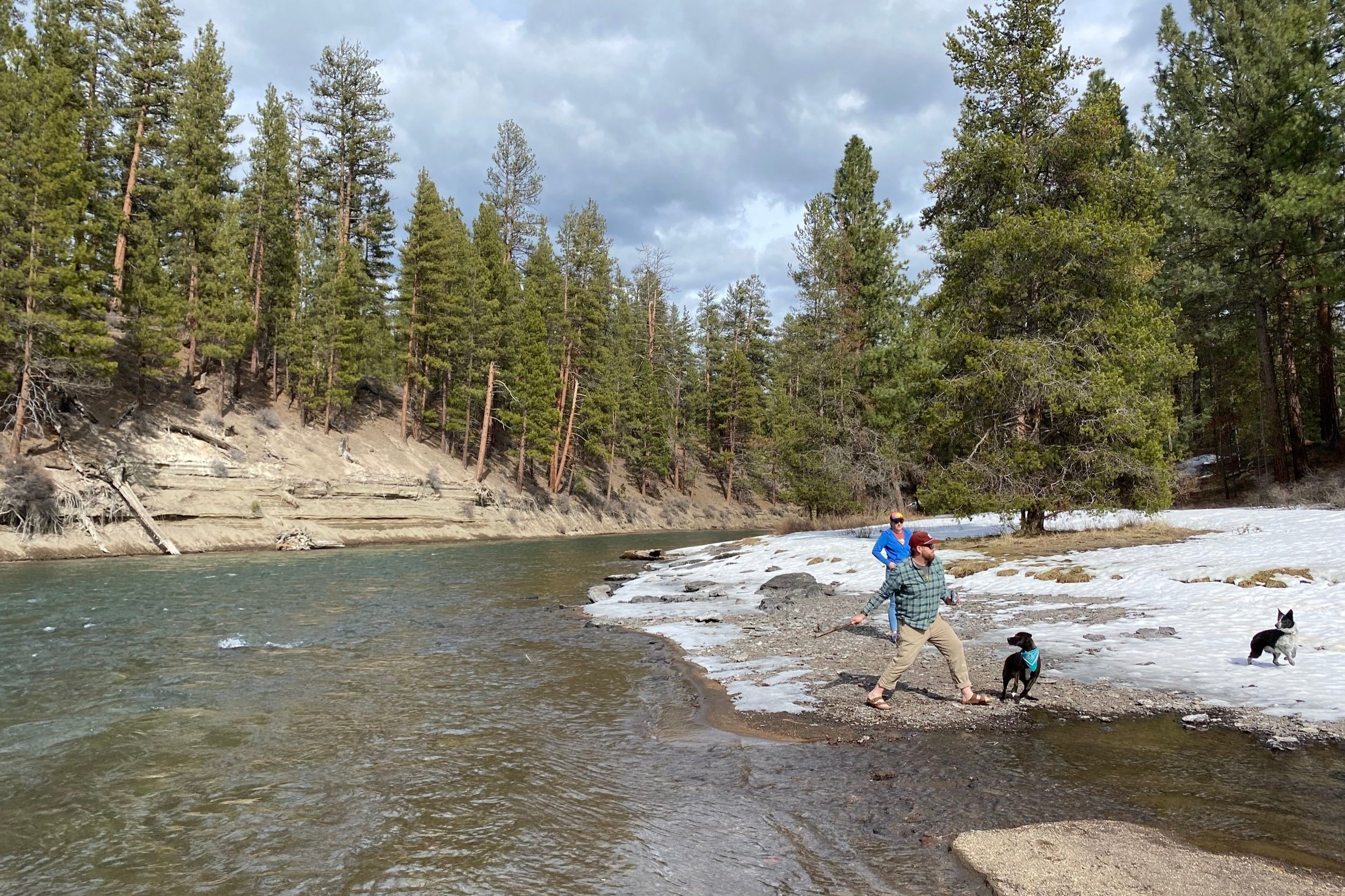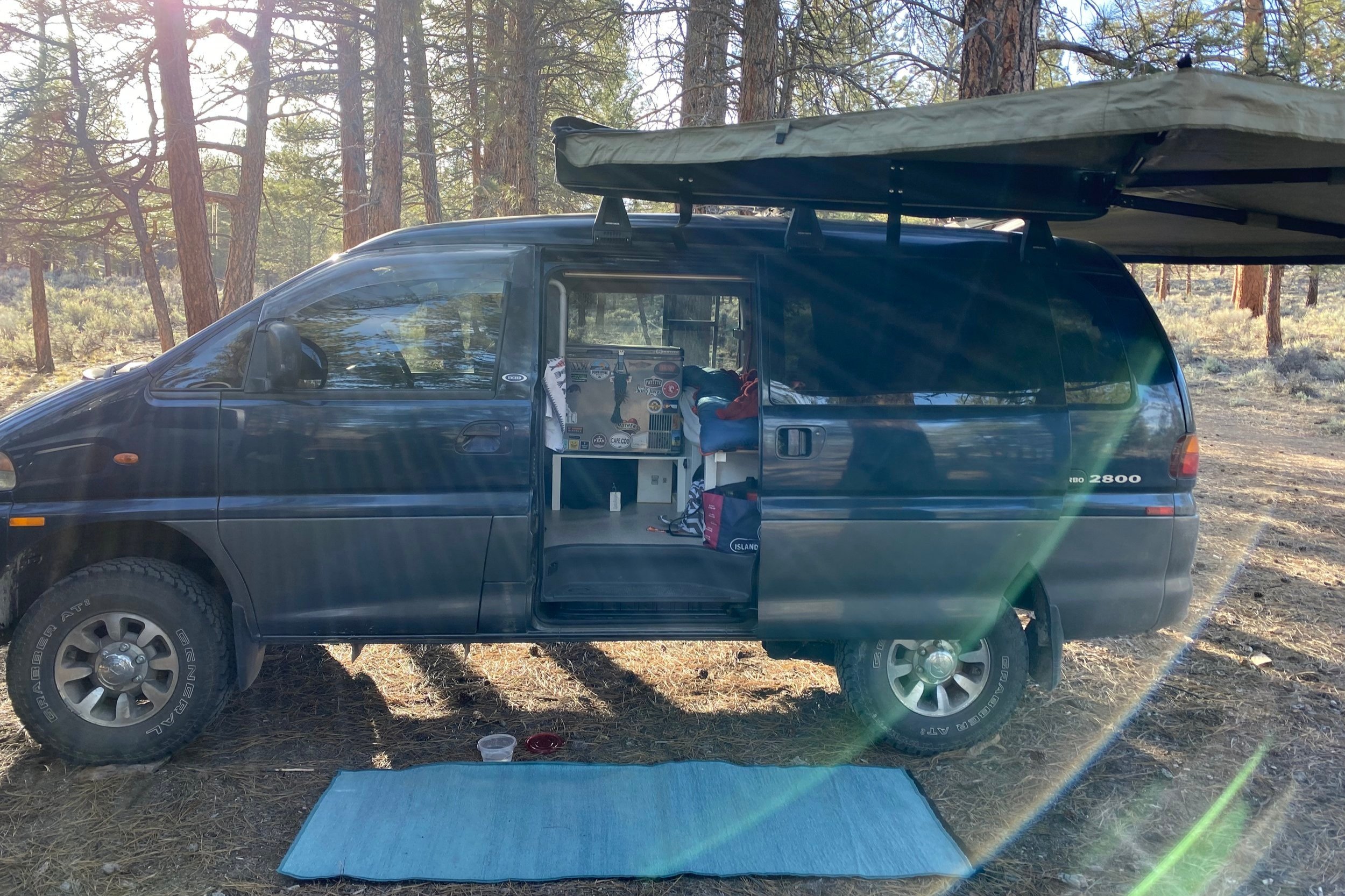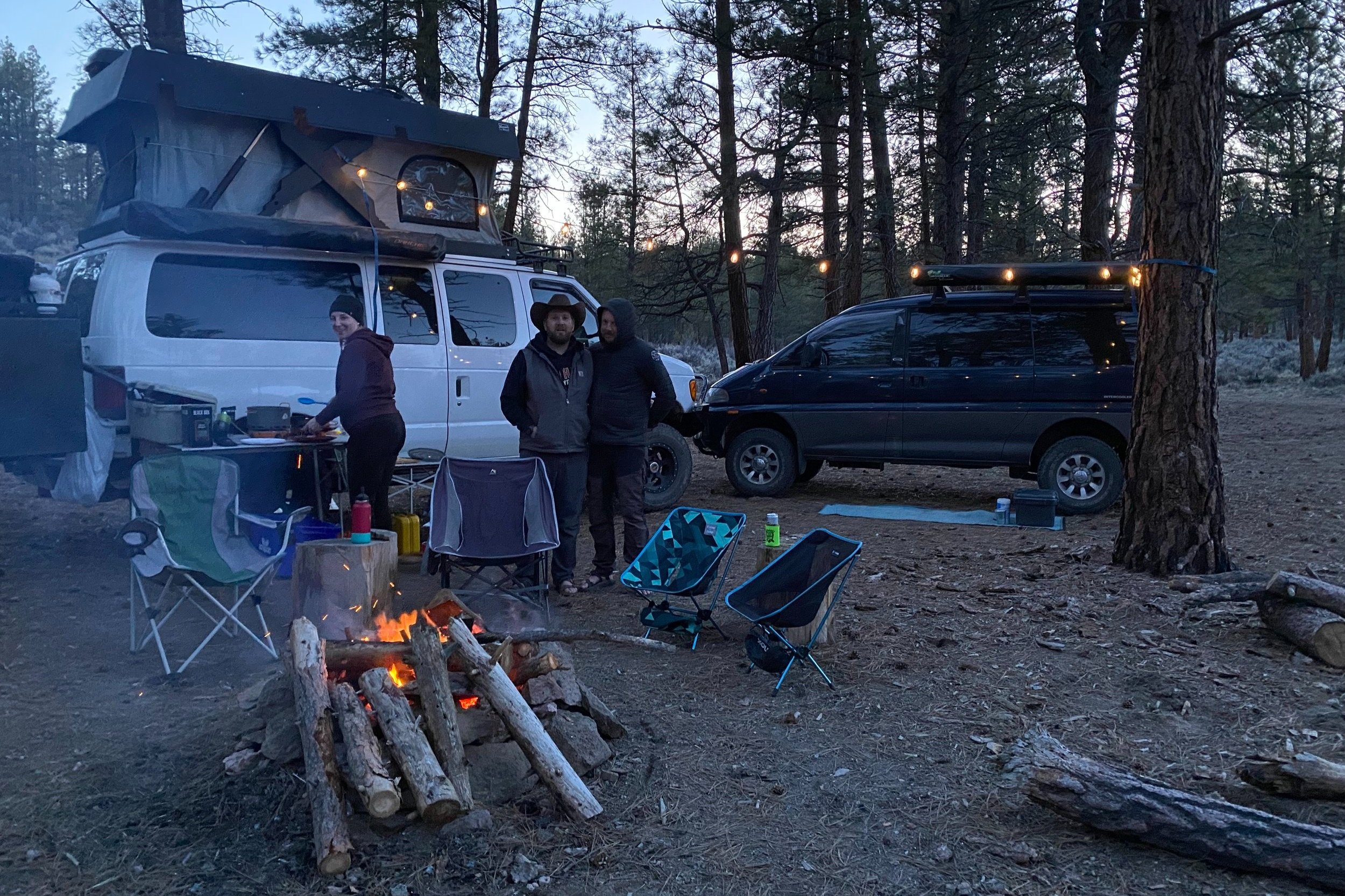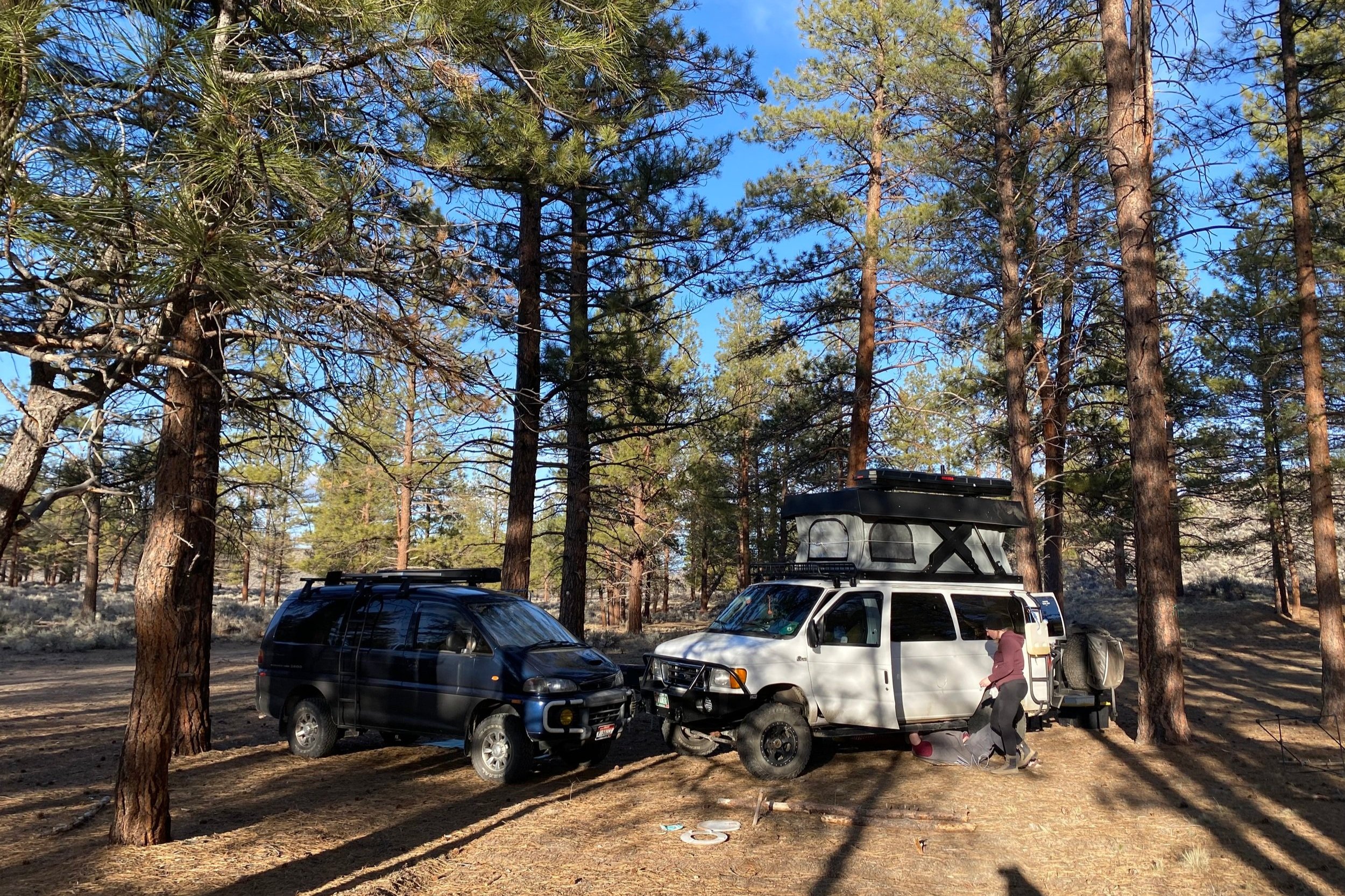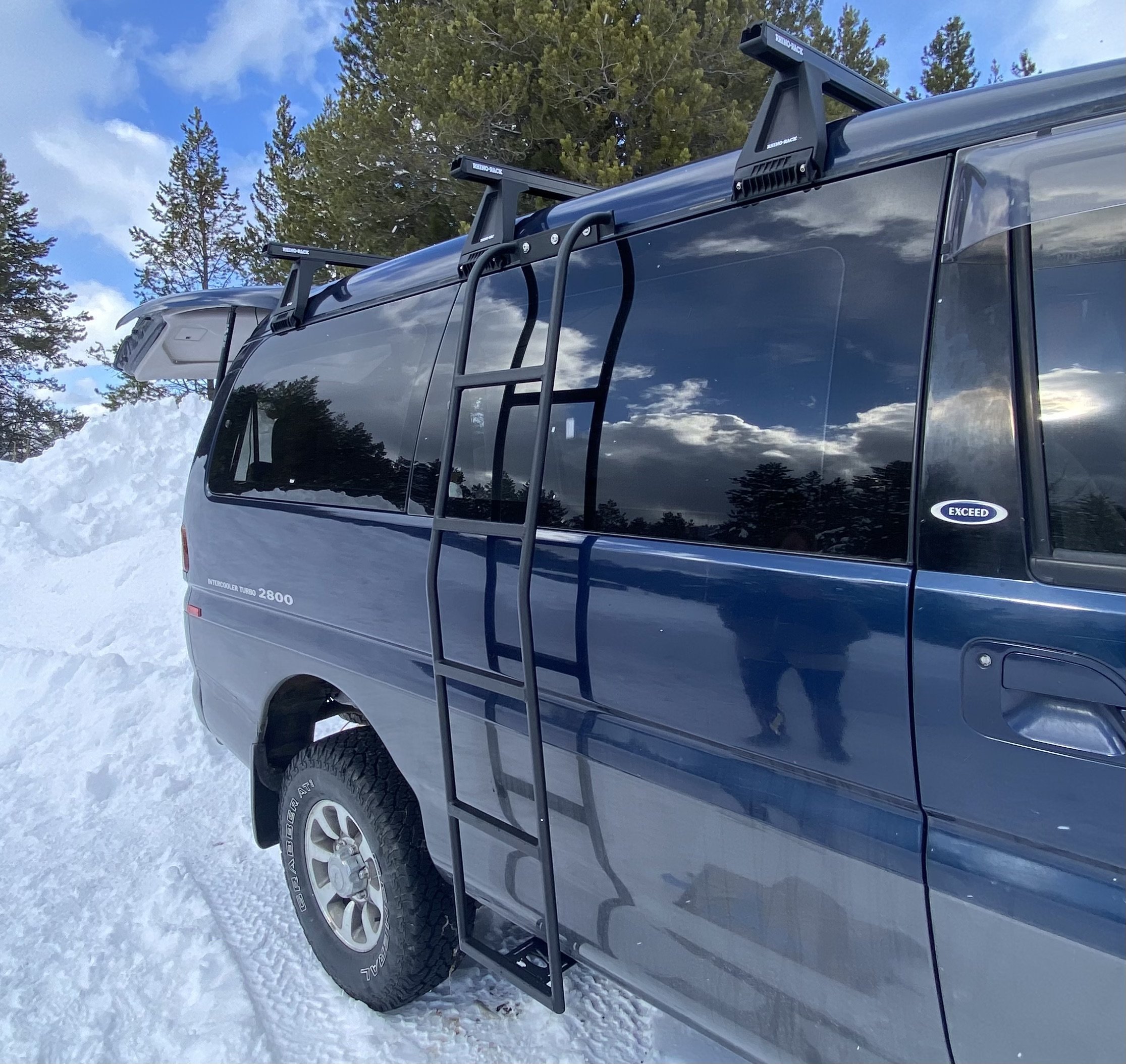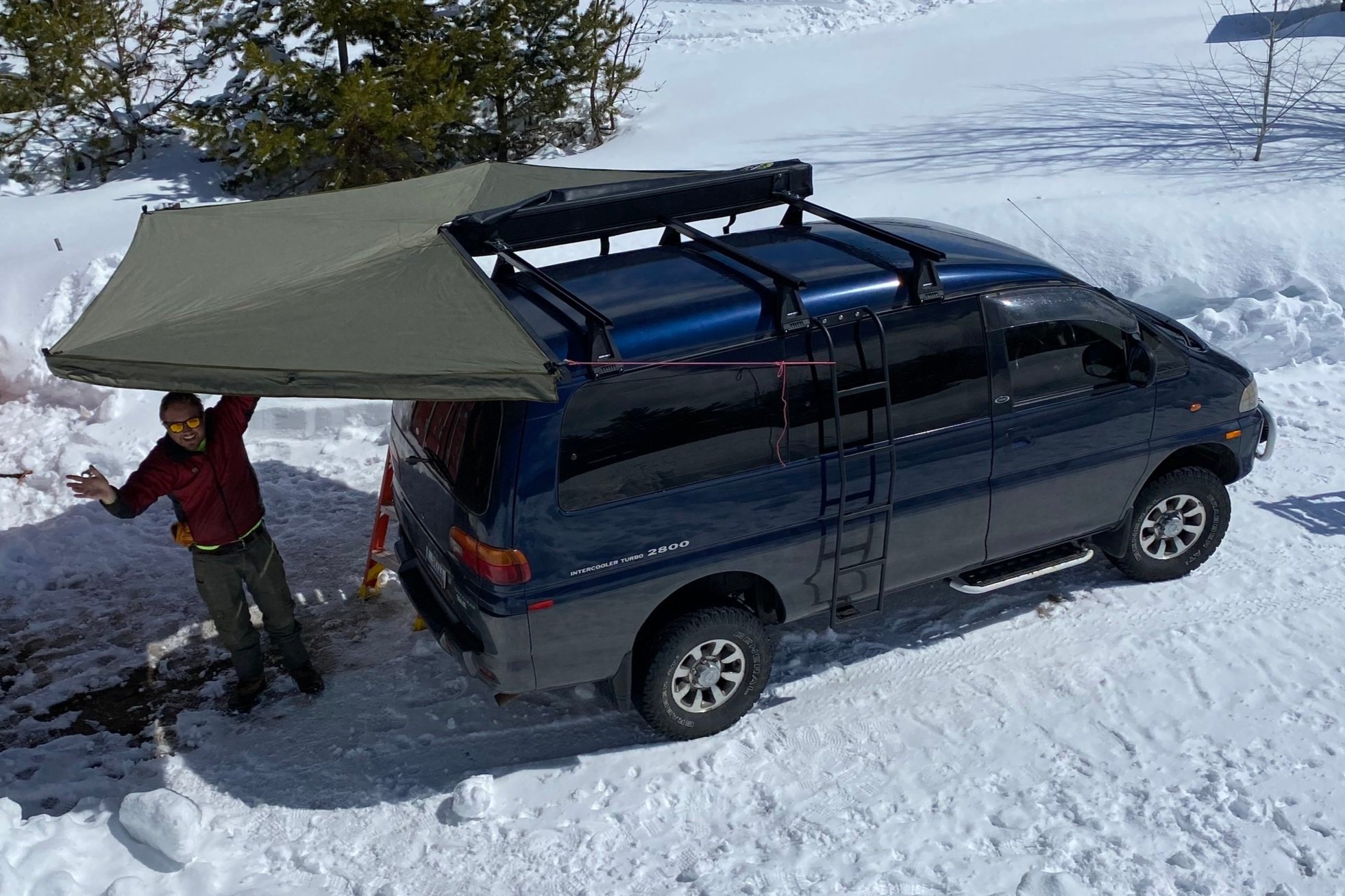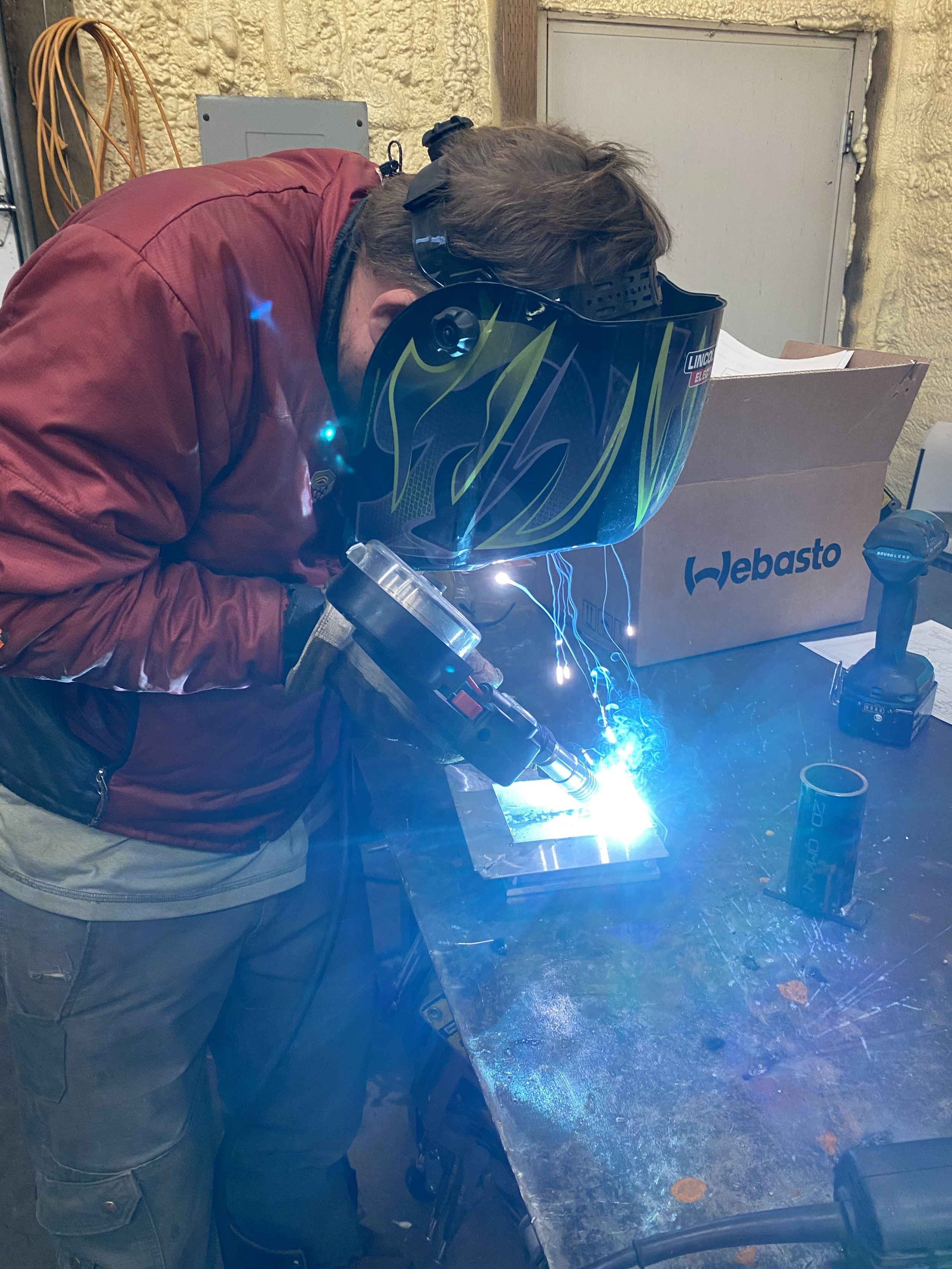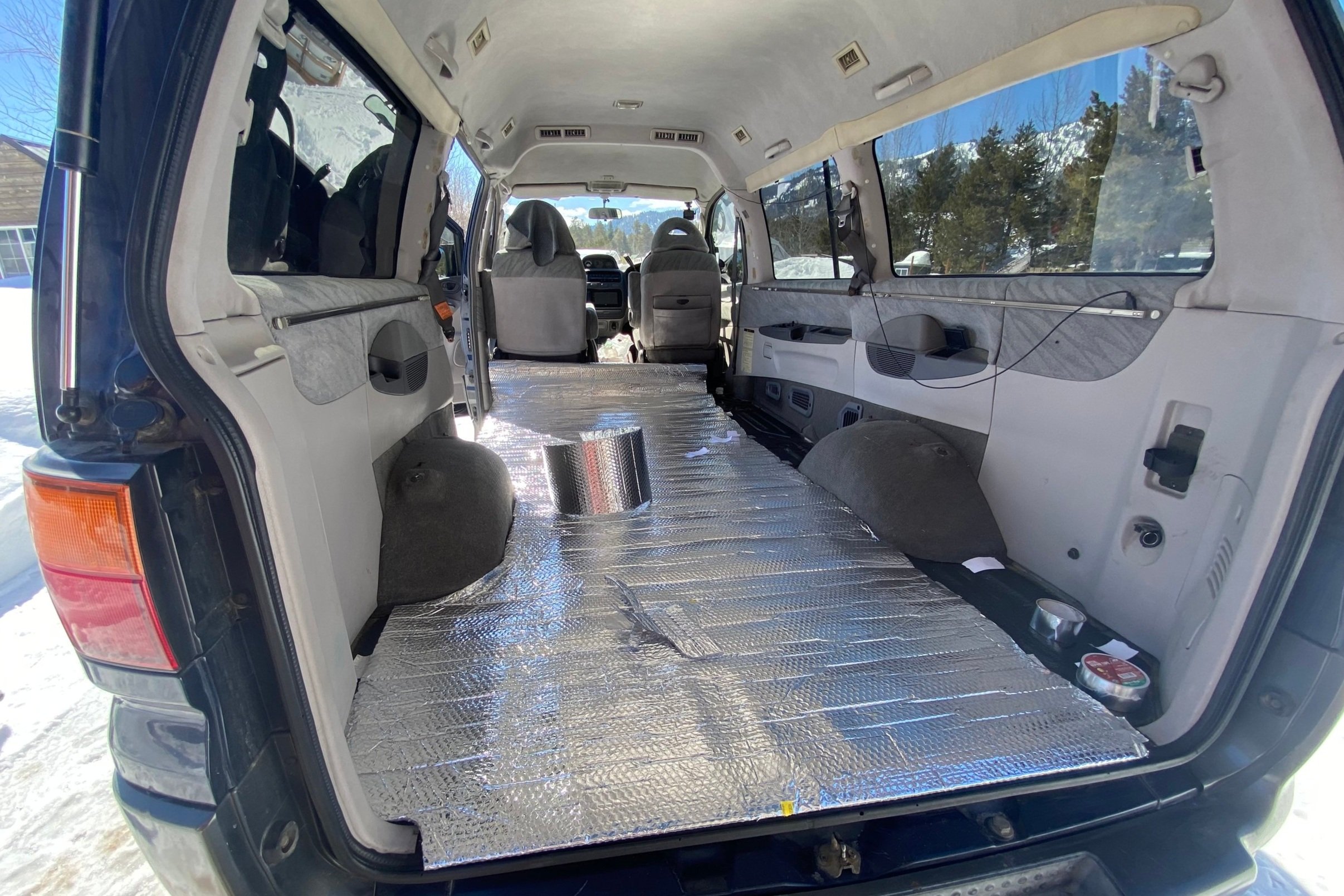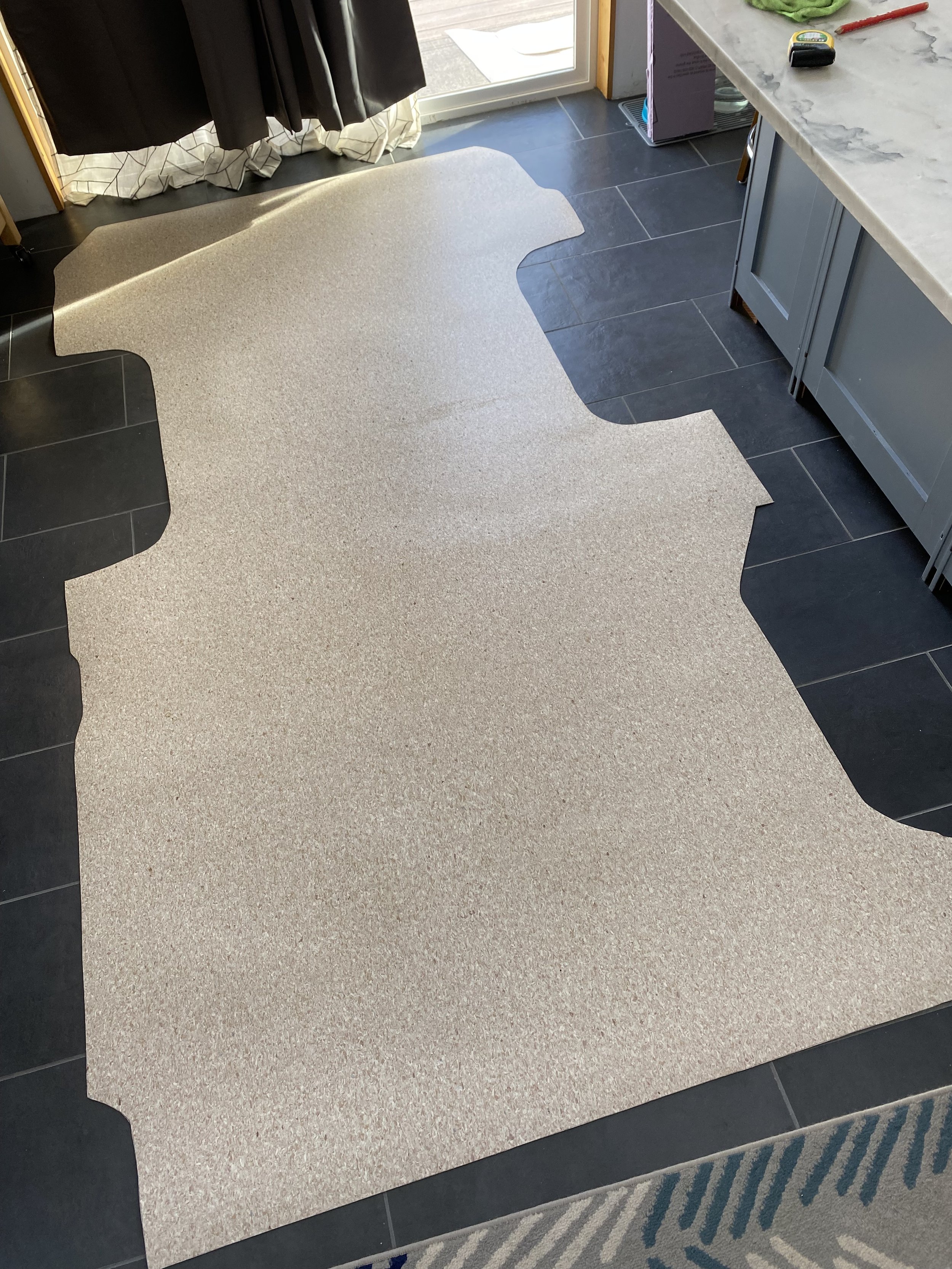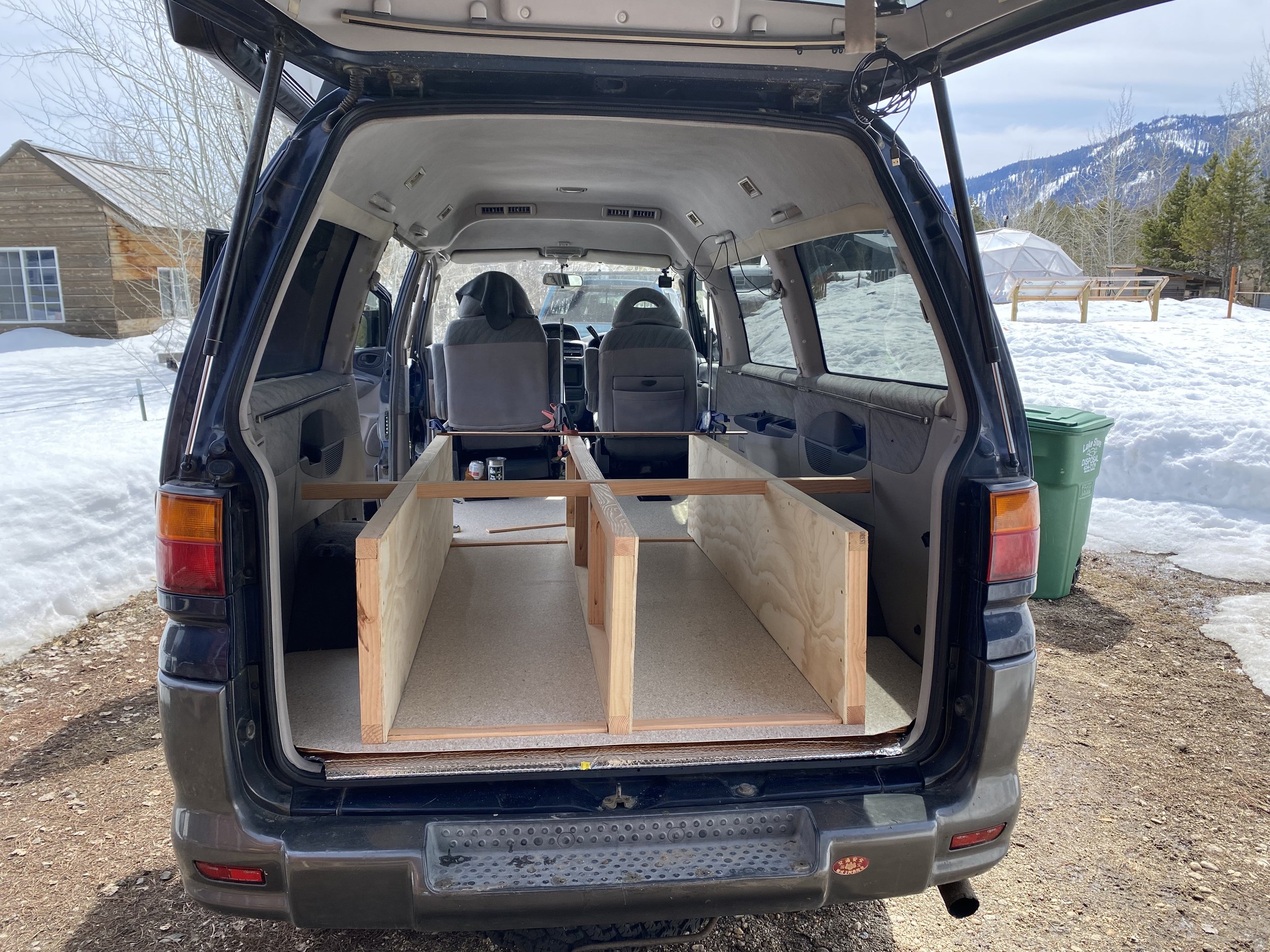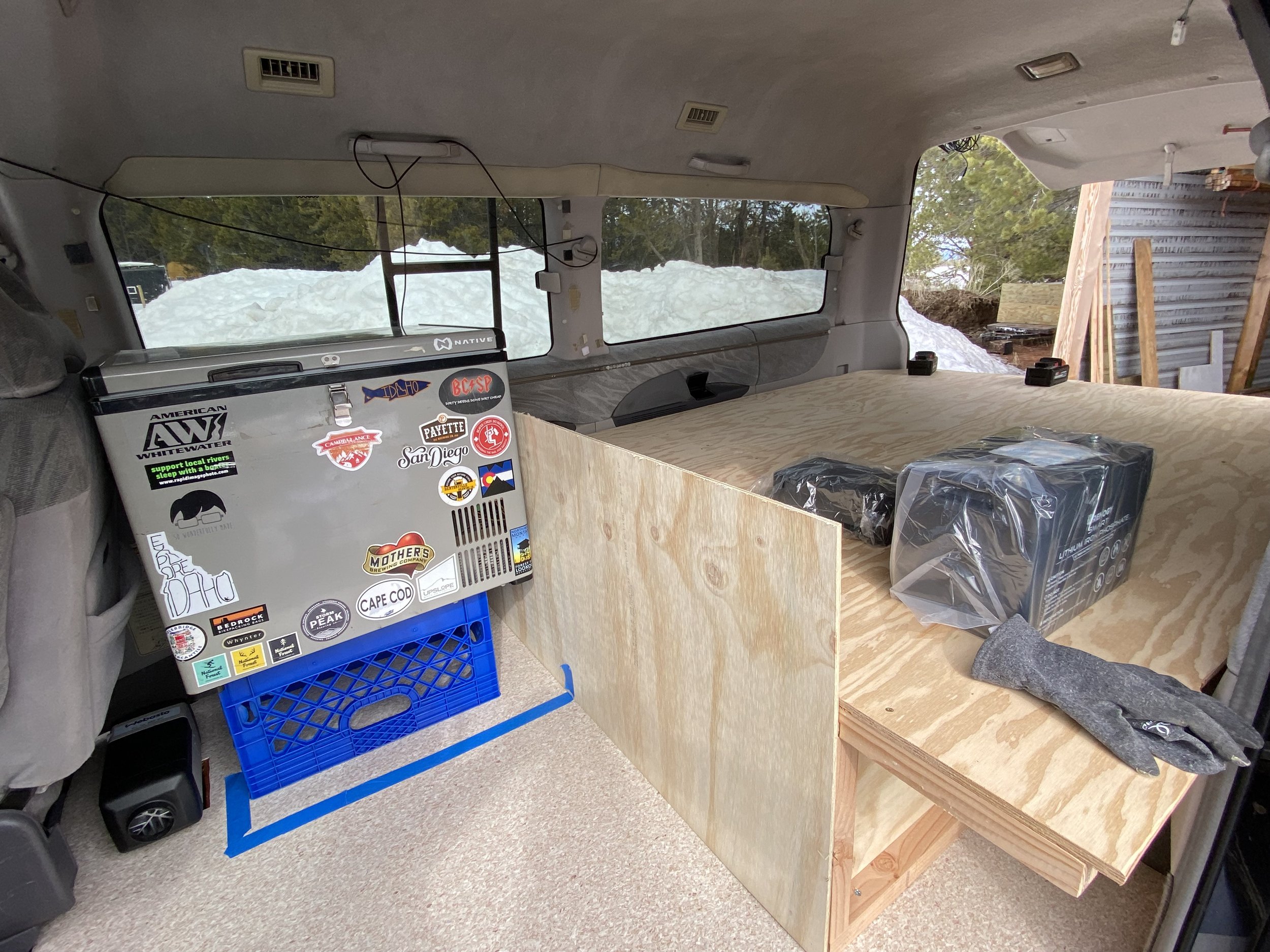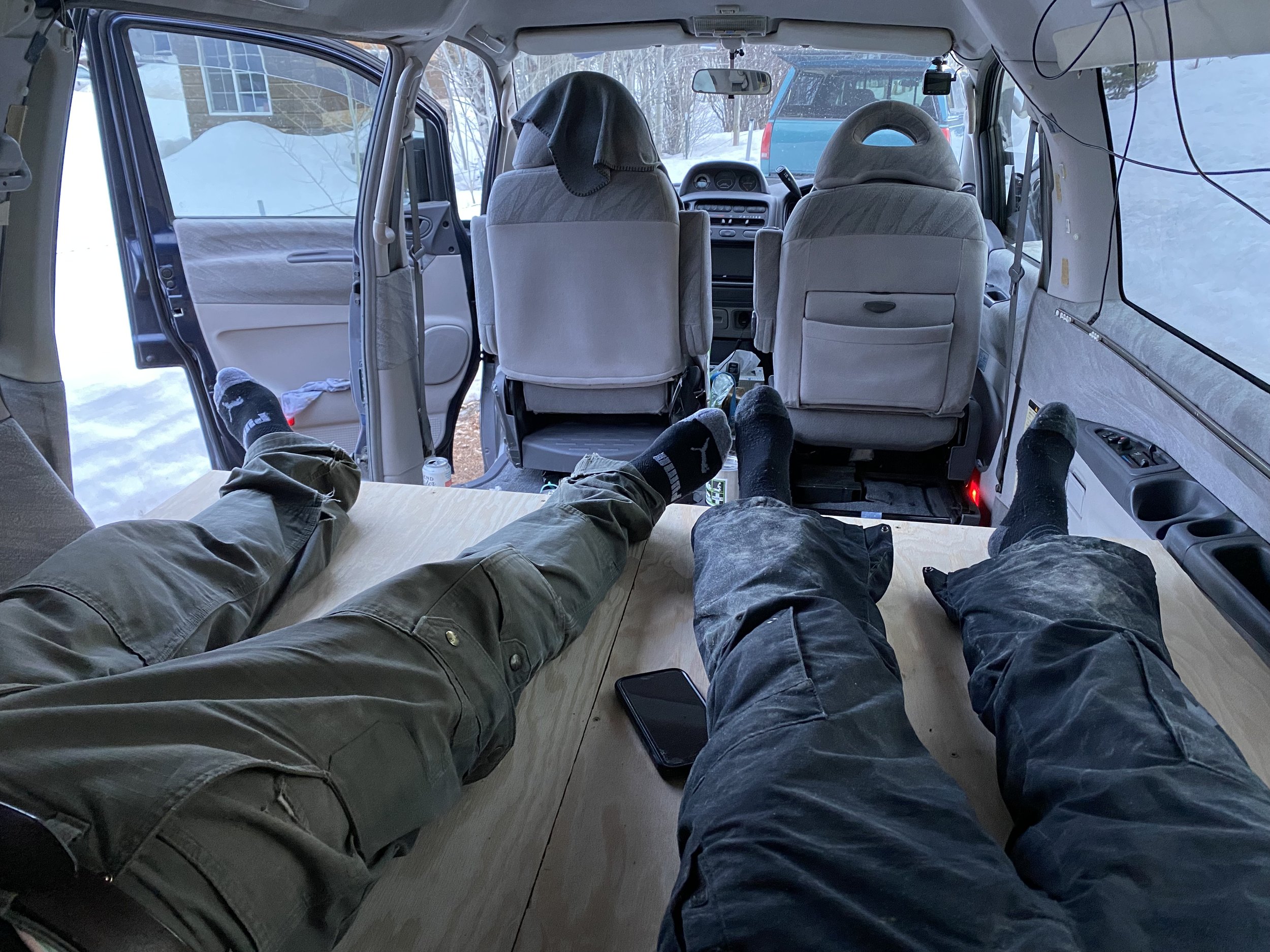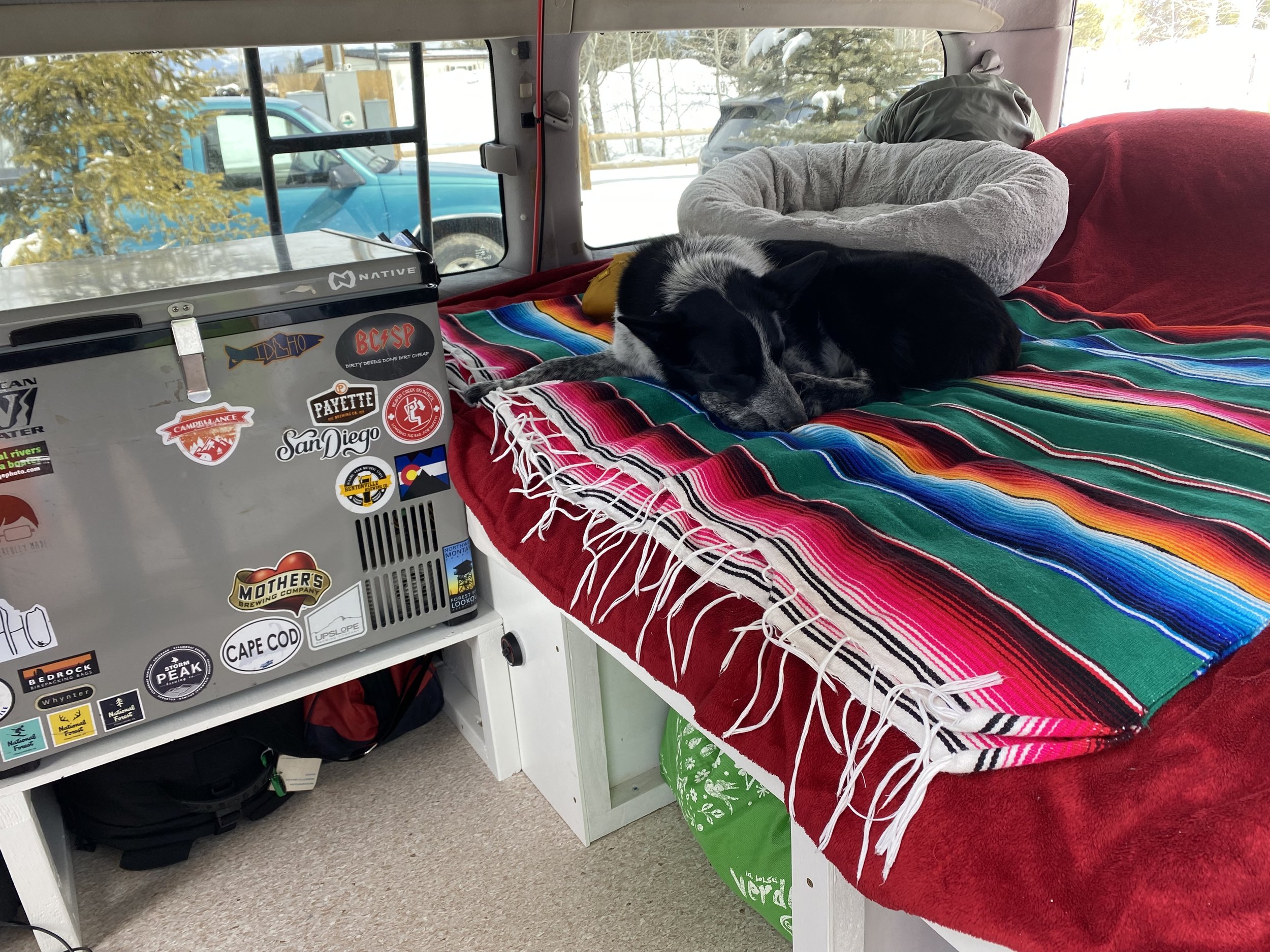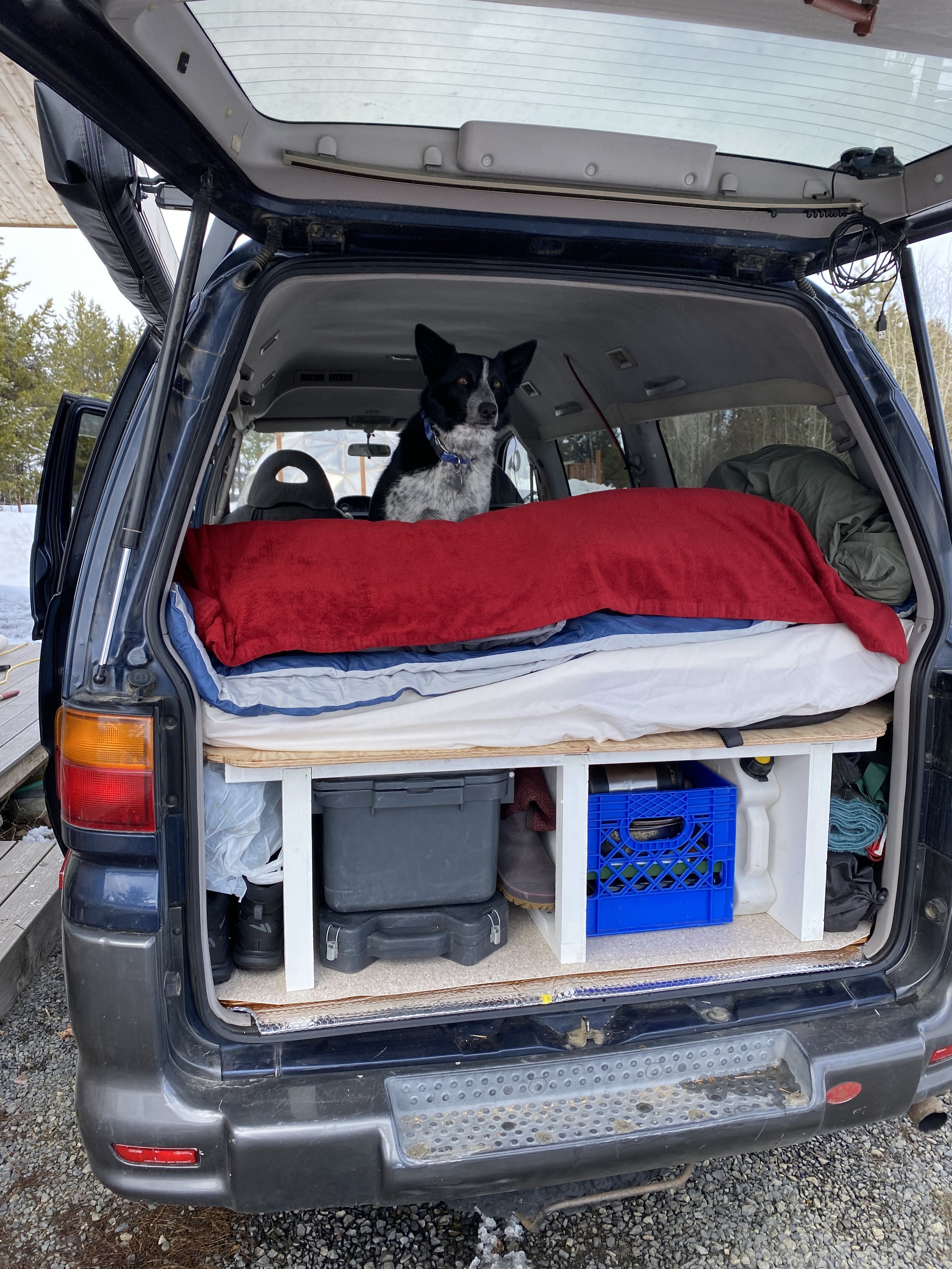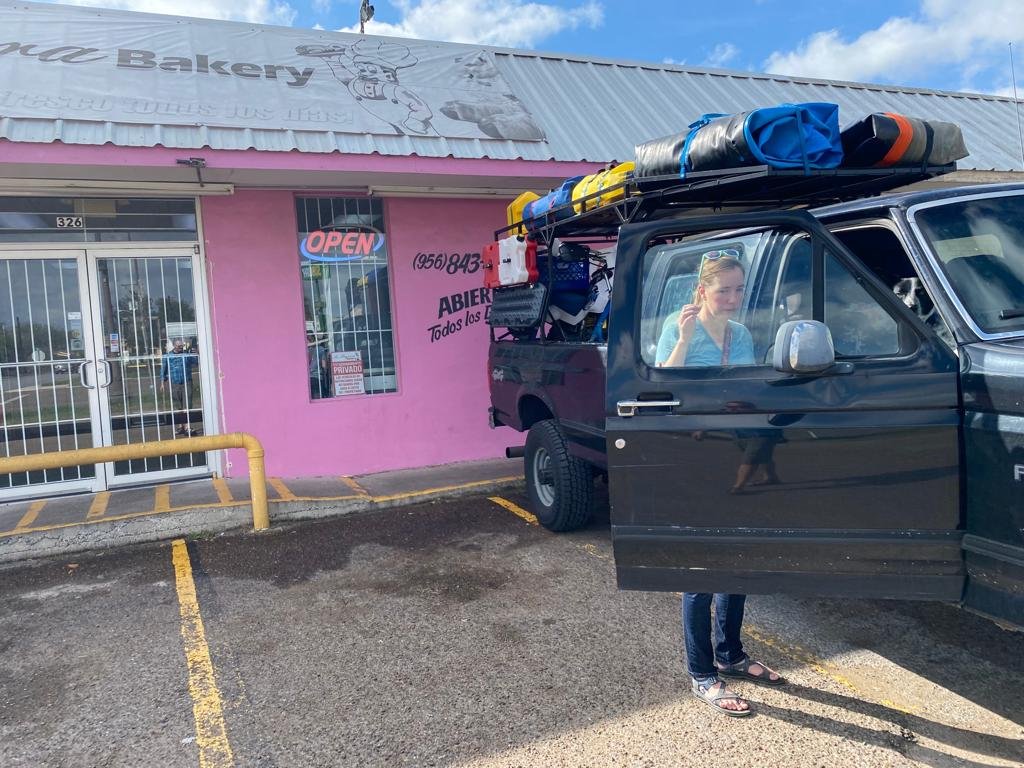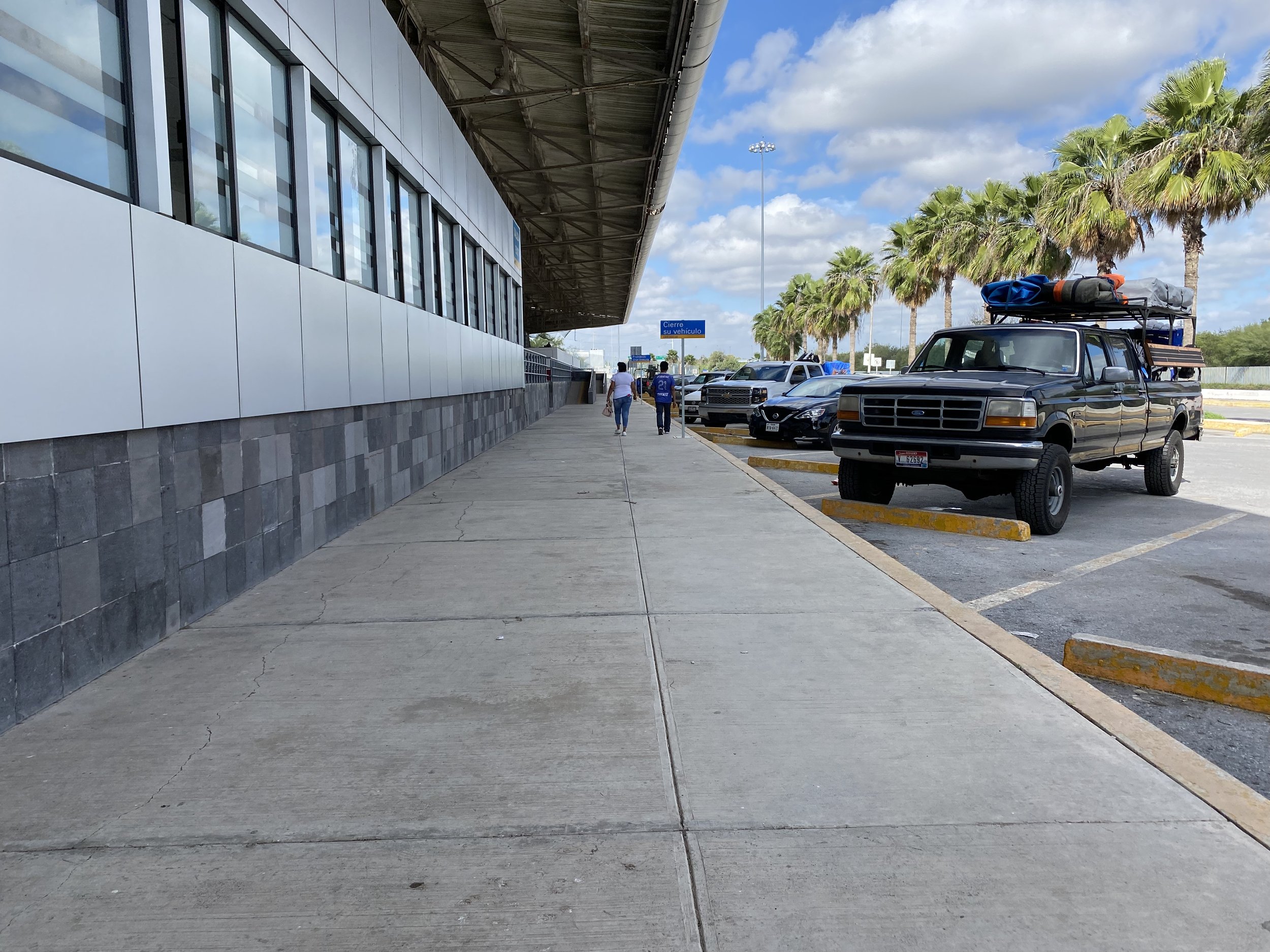April 2023 : Rendezvan, Oregon Cousin AdVANture & Our Build Mistakes Revealed
/We aimed to leave our home in Donnelly, Idaho around 7AM the day before the Rendezvan event at Mount Bachelor, the event being a great excuse to go see my cousin and his wife (here-in referred to as the cousins, but don’t worry, we’re pretty sure they aren’t blood related) in La Pine, OR, and an even greater excuse to indulge in a shakedown trip in Walter. We were up early and we got to work. I had to finish up wiring a few circuits, which took way longer than expected, and then I started troubleshooting the Webasto diesel heater, which wasn’t heating but also wasn’t showing any error codes. With no success, I started in on an oil change, which went off without a hitch, but did require dropping two bash plates and just generally took longer than we wanted. Figuring we were done with vehicle prep, we moved to house prep, and out of an abundance of care we checked the crawl space, where we found 3 inches of standing water and a malfunctioning sump pump. Awesome. I donned my filthy clothes again, got soaking wet in 45F water, and fixed the pump between a flurry of curses. Finally, I cleaned up, packed all my clothes as Chelsea packed our camp stuff, fed the dog the second half of her breakfast at 4PM (whoops) and hit the road, a cool 9 hours behind schedule.
Wiring in the snow. At least its sunny. Days before I had been Wiring in a Snowstorm. Not Cool.
THIS. IS. OVERLANDING. Trips take preparation, and sometimes preparation means fixing your sump pump hours after you were supposed to depart.
Packing was hasty, but it did make us realize we would have ample room for everything after we finished our final build out on Walter. The Under-Bed storage really ate up gear.
We pulled into La Pine late that evening, said hi to the cousins, and fell straight asleep. The next morning, they headed off to work at Mount Bachelor, and the plan was for us to meet them around noon, buying me a few hours to tinker with the Webasto heater. There was a winter storm on the way, and I desperately wanted to be able to provide a heated, comfortable van for my family. I was motivated by a desire to not freeze in an ice storm, but also because I had an expensive new toy and it was killing me to not have it working. I tore the heater out of the vehicle, inspected a bunch of factory wiring, assuming there was a missed connection somewhere, and reinstalled it, all for naught. The lights were green, there were no error codes, but the fuel pump wouldn’t turn on. Without a resolution, I hit the 11AM “pumpkin hour” that Chelsea set for us, packed our things back in the van, and took off for an ill-fated alpine adventure.
The heater malfuction was my white whale. I would not let it win, even if that meant ignoring my family and ruining my trip.
We had hit our pumpkin hour, I had to pack up tools, and head up to the mountain to have fun, but without a working heater, so it would be cold fun.
The drive to Mount Bachelor was easy; most roads were clear and those that weren’t were covered in lava rock for traction. The closer we got to the mountain, the stronger the storm became - we were forecasted for freezing precipitation at the base area, and maybe snow on the mountain. The snowbanks on the access road were impressive, 15 feet tall in places, plowicades made by giant snowblowers, as I assume the roads are too narrow and the snow too deep for loaders and excavators. Eventually we found our cousins about to clock out of their last day on the job, working ticket sales at one of the resort’s lodges. We followed them to their van, a lifted E-350 with a Quigley 4x4 conversion under it and a bespoke Howerbuilt pop-top camper on the roof, and went to the event entrance for campsite assignments.
Because we lined up together, our spots were right next to each other, and as the storm rolled in we tried to make the best of it. The chair lift nearest the camping area was on wind hold for the day, not spinning or loading, and we didn’t really feel like skiing anyways, so we got to setting up our sites. We parked in such a way that our awnings almost touched each other, which is a fun benefit to having a RHD minivan with the sliding door on the wrong side. The cousins installed the wall sections of their awning and lit a fire in their propane fire pit, while Chelsea and I attempted to get changed into winter clothes in the van for the first time, which was a learning experience (lessons learned: the window tint is great and no one can see in, but we need quick access storage for clothes).
The storm continued to get stronger, so we packed up our awning and headed to the event space for some music and revelry. The concessions tent was full of people taking refuge, the band was battling the elements on the stage, and the promotional vendors were using interns as anchors to keep the tents from blowing away. We tried to enjoy as much of it as we could, but we eventually piled back into the vans for refuge, and we ended up leaving the next day, after scraping a solid 1/2 inch of clear ice off our rigs from the storm. It was fun while it lasted, but we couldn’t refuse the comforts of the cousins’ home only 30 minutes away and the extra lure of stopping for some hot brunch on the way there. The event was going to be running for a few days, and we promised ourselves we’d come back for a day trip and ski if the skies cleared up.
Impressive snowbanks on the roads to mt. bachelor. We’re used to snow in central Idaho, but not proper PNW snow. we are more like PNW adjacent.
lining up to go into rendezvan…which, ironically, had fewer vans than rvs.
our shelters from the storm, and the first moment CHelSea and I started Considering a wall section for our awning.
This was the Beginning of the Snow storm that turned into an Ice storm.
Spirits High. Having FUn staring at the mountain that we weren;t going to ski that day.
This is my why won’t the diesel heater work Face. It was Gnawing at me and the gnawing wouldn’t go away until I had an answer. thankfully, we’d packed a small buddy heater just in case and it was enough to take the bitterly cold edge off and warm our fingers and toes.
Back in La Pine, life was way more our speed. It turns out that I didn’t want to spend a weekend in the snow on the side of a mountain after spending an entire winter working in the snow on the side of a mountain. Our home resort in Idaho had just closed for the season, and I was happy to not be skiing. Instead, we cooked great food, thawed and dried out the vans, got some projects done, soaked in the hot tub, and waited for the weather to clear on the hill.
The cousins had recently installed new tent canvas with windows on their pop-top, and the freezing rain and gale force winds of the Rendezvan event had exposed some pinhole leaks and seam tape failures. They got to work applying aqua seal and waterproofing spray while I crawled back under then van for my third attempt at installing the diesel heater - I just would not let this failure go unaddressed! After tracing wires again, and bleeding fuel lines again, and verifying voltages again, I put out some calls to regional Webasto dealers. I eventually found one who generously took some time off his lunch break to help a non-customer, and after describing my wiring diagram to him, he identified a circuit that he just didn’t like. “Pull it,” he coached, “Just pull it. I don’t like that pink wire - It doesn’t make any sense.” I yanked that pink wire, breaking its ground circuit, and just like that, the fuel pump clicked into action! It was a bit anti-climactic, and I certainly don’t think the the nice refrigeration tech in Yakima understood why I was hooping and hollering at him over speaker phone, but it sure felt nice to scratch that mental itch and have our heater working for the first time.
We spent the next few days soaking in the hot tub, and making local adventures to some rivers and into the big city of Bend, OR. Gracie showed off by being the fastest on land when it came to fetch, but got properly trounced in the water by her cousin River the lab. Eventually the skies broke and Chelsea and I went skiing in some proper spring conditions.
searching for the illusive heater gremlin.
Graciously lent some garage space.
Waterproofing. Life is Maintainence.
… this is overlanding?
We made it up to the hill for a day of spring skiing. It was worth it. Side note: those trew jackets are going to be our shells for our big trip south. They are great and are way more burly than a Traditional rain jacket.
Local adventures around La Pine.
Local adventures with dogs.
Rendezvan was a bit of a bust, but we still wanted to go adventuring. The cousins had a route planned out for us to explore, and we headed east southeast towards Christmas Valley to explore three local destinations, Crack in the Ground, Fort Rock, and Hole in the Ground. I get the feeling that the early emigrants on the Oregon Trail had stopped caring about naming things by the time they hit Eastern Oregon.
The drive out was beautiful, it reminded me of parts of the Owyhee plains and parts of Western Colorado. A vastness that’s flat, but not flat like the plains of Kansas, flat like a desert, where there are constant small pockets of complexity. The trip was a bit of a loop, and a bit of an out-and-back. Our first stop was Crack in the Ground, a long, mostly continuous ravine created by volcanic action that offers an adventurous but easily accessible hike. In most places, the ravine is no more than 10 feet wide, and the walls are nearly vertical. The feature runs for 2 miles, and the parallel cliff walls are sometimes as tall as 70 feet. The trail was mostly dry, with a few spots of packed snow and ice adding to the adventure and forcing us to scramble a bit here and there. The dogs were in heaven, although we did keep Gracie on a short leash in case she found a rattlesnake.
After Crack in the Ground we headed to Fort Rock, a large volcanic ring that was once an island in the enormous lake that covered what is now an arid desert. This geological feature towers over the surrounding landscape, and the hiking loop inside the rim is somehow even more spectacular. When we arrived, there was maybe one other car in the parking lot, and we essentially had the pace to ourselves. It was a phenomenal side stop on the adventure, and it comes recommended (clean bathrooms and some cool interpretive artwork and signs as as well!).
From Fort Rock we pushed on to our planned camping area, a spot off a forest road well known to our cousins, but otherwise just an unmarked bit of dispersed camping in the “wildernish”. We had a few dusty dual tracks to manage as we jumped between USFS fire roads, and one moderate sized climb that looked bigger than it was. Sensing a photo opportunity, Chelsea scrambled out of the van and through the sage brush to capture The Yeti and Walter in all their glory, climbing the hill.
The campsite was beautiful, just a slice of freedom and dirt nestled in the pine trees. There was a slight breeze, so we circled up the vans to protect the fire ring and the kitchen. The Cousins prepared a fantastic meal as Chelsea and I inspected and reinspected their van and their systems, making mental notes for what we wanted to do to Walter when we got home.
The night was joyously uneventful, the bed and the van was comfortable and cozy with our newfound ability to run the diesel heater, and in the morning we packed up, drove some fun dual track back to La Pine, and then headed back to Idaho, feeling right at home being worn out in a van making miles across ribbons of rural American highways.
ENtering Crack in the Ground! Very accessible, very cool.
Spots of the trail that hadn’t seen sun were pretty slick, and added just enough adventure to keep us entertained.
All sorts of neat features, it kind of felt like a cave tour but with an open ceiling
Cool geological features and minor slip-and-fall hazards everywhere!
There were also a handful of trail splits and peekaboo rock windows.
family portrait time!
The YETI leading the way through the dusty forest roads.
The cousins leading the way up a dusty hill climb
Dog is my copilot!
This climb wasn’t the limit of Walter’s abilities, but the turbo was whining and my foot was nearly to the floor.
Pure exuberance!
Reevaluating our route choice at the to of the climb.
The wagons circled up at camp.
Home, complete with an entRance mat.
Campsite TV engaged, a meal almost ready.
The string lights really made it. Without them, we are animals.
Morning light on the camsite.
A fun set of smooth banked turns and small ruts along a power line access road led us back to La Pine
With the adventure complete, we switched the dog off and drove home.


